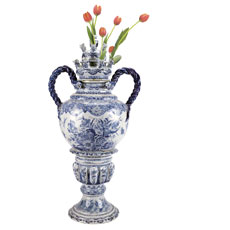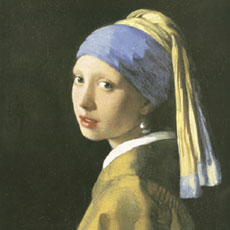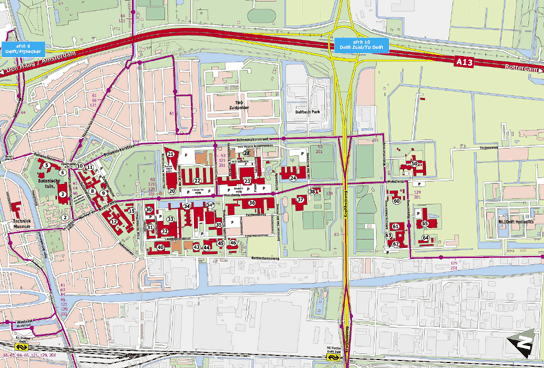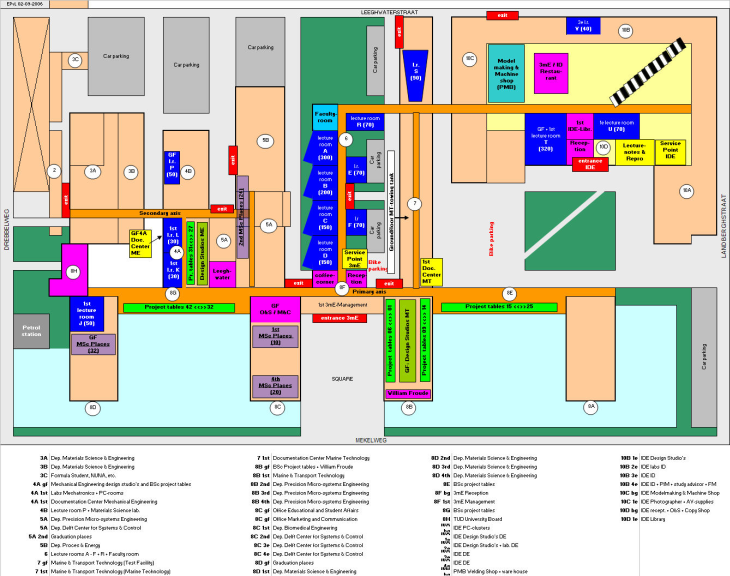
Conference Venue
 Delft is a city and municipality in the province of South Holland (Zuid-Holland), the Netherlands, located halfway between Rotterdam and The Hague. The city dates from the 13th century and owes its name to the word 'delving', digging the oldest canal, the Oude Delft. In 1246, Delft received its city charter from the Dutch Earl Willem II. Delft flourished and new neighbourhoods were added. As early as 1355 the city reached the size it would remain until the 19th century.
Delft is a city and municipality in the province of South Holland (Zuid-Holland), the Netherlands, located halfway between Rotterdam and The Hague. The city dates from the 13th century and owes its name to the word 'delving', digging the oldest canal, the Oude Delft. In 1246, Delft received its city charter from the Dutch Earl Willem II. Delft flourished and new neighbourhoods were added. As early as 1355 the city reached the size it would remain until the 19th century.
|
The association of the House of Orange with Delft began when William of Orange (Willem van Oranje), nicknamed William the Silent (Willem de Zwijger), took up residence there in 1562. William was the leader at the time in the struggle against the Spanish, the Eighty Years' War. Delft was one of the leading cities of Holland and was equipped with the necessary city walls to serve as a headquarters. When William was shot to death in 1584 by Balthazar Gerards in the hall of the Prinsenhof, the family's traditional burial place in Breda was in the hands of the Spanish. He was buried in the Nieuwe Kerk (New Church), starting a tradition for the House of Orange that has continued to the present day. |
 |

Retrace the steps of the Dutch Royal Family History
On the 3rd of May 1536 the great fire broke out. How it started exactly is not known, but it is likely that the wooden spire of the Nieuwe Kerk was hit by lightning and flying sparks set the surrounding houses on fire. Some 2,300 houses went up in flames.
More than a hundred years later, in 1654, an explosion destroyed part of the city and over a 100 people were killed. The cellar of the former Poor Clares convent on Paardenmarkt was used to store gunpowder. This central warehouse for the region Holland contained some 80,000 pounds of gunpowder.
The consequences of the explosion were enormous - two hundred houses were razed to the ground, and roofs fell in and windows were smashed in another three hundred houses.
In 1660 a new gunpowder house was built about a mile outside the centre.

|
Delft is well known also for the Delft pottery ceramic products, the so-called Delftware or Delft Blue, which were styled on the imported Chinese porcelain of the 17th century. The city had an early start in this area since it was a home port of the Dutch East India Company. |
|
The painter Johannes Vermeer (1632-1675) was a Dutch painter who specialized in domestic interior scenes of ordinary bourgeois life. His entire life was spent in the town of Delft. Vermeer was a moderately successful provincial painter in his lifetime. He seems to have never been particularly wealthy, perhaps due to the fact that he produced relatively few paintings, leaving his wife and eleven children in debt at his death. Virtually forgotten for nearly two hundred years, in 1866 the art critic Thoré Burger published an essay attributing 66 pictures to him (only 34 paintings are firmly attributed to him today). Since that time Vermeer's reputation has grown astronomically, and he is now acknowledged as one of the greatest painters of the Dutch Golden Age, and is particularly renowned for his masterly treatment and use of light in his work. More information about his work can be found on Wikipedia |

|

Retrace the steps of Vermeer's Life in Delft
Several other famous painters lived and worked in Delft at that time, such as Pieter de Hoogh, Carel Fabritius and Nicolaes Maes. They all were members of the Delft School. The Delft School is known for its images of domestic life, views of households, church interiors, courtyards, squares and the streets of Delft. The painters also produced pictures showing historic events, flower paintings, portraits for patrons and the court, and decorative pieces of art.

The city centre retains many old and historical buildings, and many streets have canals in the centre, inhabited by fish and plants. Historical buildings include:
* Oude Kerk (Old Church). Buried here: Piet Hein, Johannes Vermeer, Anthony van Leeuwenhoek.
* Nieuwe Kerk (New Church), constructed between 1381 and 1496. It contains the Dutch royal family's burial vault, which between funerals is sealed with a 5000 kg cover stone.
* The Prinsenhof (Princes' Court), now a museum.
* City Hall.
* The Oostpoort (Eastern gate), built around 1400. This is the only remaining gate of the old city walls.
* The Gemeenlandshuis or Huyterhuis, built in 1505, which houses the regional water authority Delfland since 1645.

You can download a Delft Citymap here.
Conference Location

|
Delft University of Technology (TU Delft) is one of three universities of technology in the Netherlands. It was founded as an academy for civil engineering in 1842 by King William II. Today well over 16,000 students are enrolled. The Conference itself will be held at the Faculty of Mechanical, Maritime and Materials Engineering, Mekelweg 2. Number 34 on the map below. |

Click on the Map to get the conference location

The Conference Building
Getting to Delft
By Plane |
When arriving in the Netherlands, you will most likely arrive at Shiphol Airport near Amsterdam. At the airport itself you can transfer to the rail network. You can either take a train to The Hague/Rotterdam and change trains at The Hague Holland Spoor or go on to Rotterdam, change trains there and return to Delft. In both cases the distance to Delft is about 20 mins. For train schedules see the Dutch Railways link below. |
By Train |
Both international and or local train connections information can be found here: Dutch Railways. |
By Bus |
The TU Campus can be reached from Delft Station with the district lines 69, 121 or 129. For more information see also de Reiswijzer (in Dutch). |
By Car |
The TU Campus is easily accessible by car via the A13, exit Delft/Pijnacker and exit Delft Zuid/TU-wijk. Two useful websites you can use to get driving directions are www.mappy.com and www.viamichelin.nl |
On Foot
|
When you are in Delft itself, the city center, is at walking distance: cross the canal on the left of the TU map pictured above, and you're at the edge of town already. |
Useful Links
* Municipal Website of Delft
* Delft Tourist Website
* Nieuwe Kerk Website
* Map of Delft
* Panorama of Delft
* Pictures of Delft
* Images from Delft and Netherlands
* Delft Guide
















